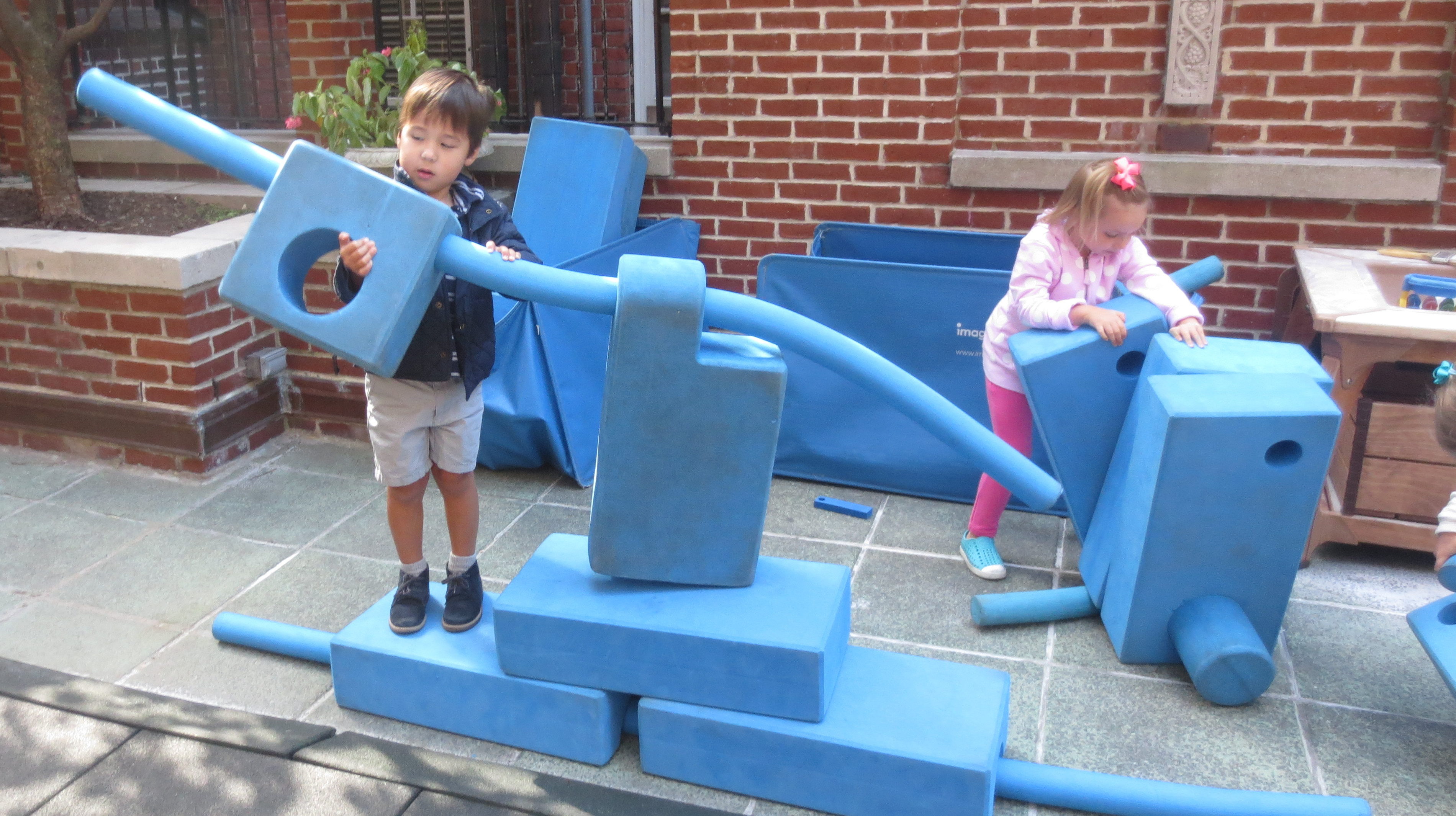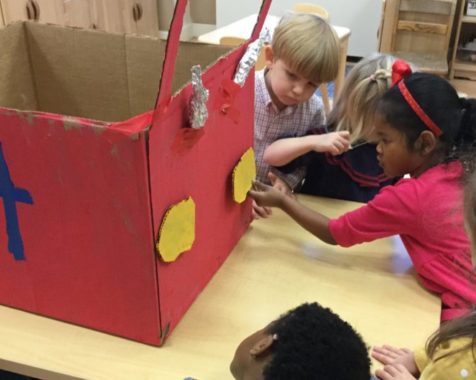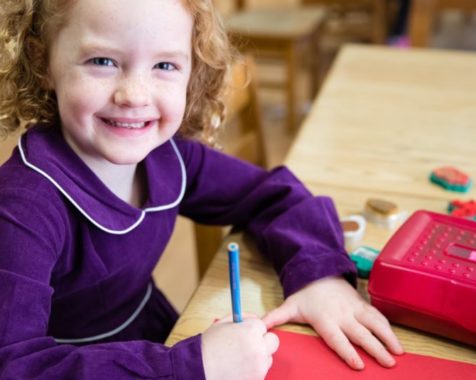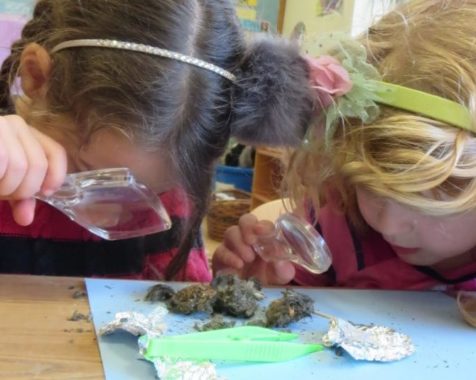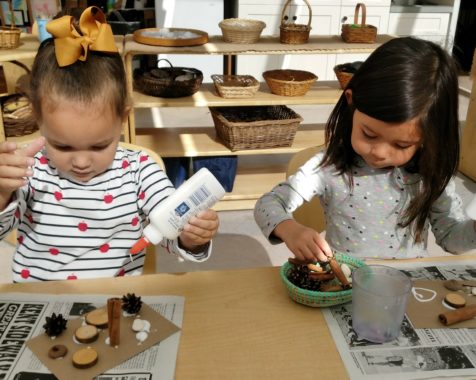Teachers at Brick view themselves as facilitators of children’s physical development, exposing them to and guiding them through a wide variety of activities. They help children to explore, create, challenge, and expand movement potential. They pose challenges, aid discovery, encourage, reinforce, and provide a helping hand when needed. Both formal and informal opportunities to engage in physical activities are built into the daily schedule. In all classrooms, gross motor activities take place regularly through games, songs, dramatic play, etc.
All classes have at least 30 minutes of outdoor time each day, while indoor areas such as Watson Hall and the Youth Floor are used in inclement weather. Teachers often organize activities such as catch, ball bouncing, obstacle courses, tumbling on mats, etc., for their students. The Garden is used by the three year olds and provides climbing equipment including structures with tunnels, slides, and ladders, a jumping tube, tricycles, and two sand tables. The Roof serves as the outdoor playground for the four and five year olds and consists of climbing equipment including slides, a cargo net, ladders, and a climbing rope, as well as tricycles, scooters, and a basketball hoop. On the Youth Floor, children use slides, climbing structures, a balance beam, mats, wagons, tricycles, and cars. In Watson Hall, teachers make a wide variety of portable equipment available, including jump ropes, hula hoops, balls and more. Children are taught safe methods and rules for using all equipment and are encouraged by their teachers to try all the different activities offered to them. Movement activities are built into the weekly music and movement classes, as discussed in the Music and Movement section above.
Fine motor skills are developed in the classroom through use of manipulative materials, writing and drawing instruments, cutting, gluing, play dough, pretend play materials, and art activities such as beading and stitching. The School uses the Handwriting Without Tears program for teaching letter formation. This program, designed by occupational therapists, provides teachers with many readiness activities to employ in the classroom before children ever pick up a pencil or try to form a letter on paper. Then, when children in the four and five year old classes are ready, they work with small pieces of chalk on slates, and eventually with pencils on paper, to form letters appropriately. Outside of the classroom, fine motor skills are developed through experiences with instruments in music and movement class and with clay, drawing and painting tools, woodworking, sewing, and more in the art studio.
